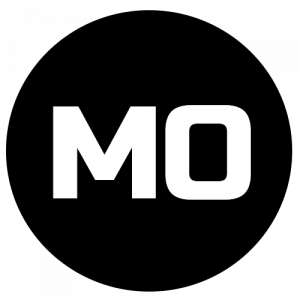Improve Your Paid Ads Performance with Content Marketing
Published byWhat is Content Marketing?
According to Hubspot, Content Marketing is the process of planning, creating, distributing, sharing, and publishing content to reach your target audience.
Why Content Marketing?
Content marketing strategy as well as digital marketing strategy's tactic can help business to improve brand awareness, boost sales, connect with your target audience members, and engage prospects and customers. Content marketing is all about storytelling, we like to hear story and humans have told stories for as long as they could speak. Audiences attention will always go to those who tell great stories. A great and successful content marketing campaign needs a very good content, a Viral Content if you will.
How to collect audience from Content Marketing
When we ask how to collect audience or getting the target audience, we need to ask some simple questions:
Who are they? (not only their gender and age)
What are their interests?
Where do they consume content?
Using Audience insight to analyse your audience
Demographic data can be useful, but you need to explore further to find out how to best connect to your audience, analytics data is a great starting point, you can discover information on demographics alongside segmentation of interests depending on your website and Google Analytics setup.
Here are some other ways to discover your audience:
- Social analytics and insight tools such as Facebook Insights, Twitter Analytics
- Facebook groups with industry/community followers
Three Content Marketing Examples
There are many types of content marketing. My intent is to give you a brief introduction to content marketing and get you thinking like a content marketer so you’ll see the opportunities all around you. Here are three examples to help your mind start percolating.
1. Infographics
Infographics can make your content rally go viral, materials with visual elements like compelling images or graphics can generate 94% more view that simple text of content that does not contain any images.
2. Videos
Video is an essential part of every content marketing strategy. A video marketing strategy will help you meet your goals and create video content that addresses real business objectives.
3. Webpage
Webpage that is content marketing not just promote products or services but provides valuable information customers.
Use Your Content to create Paid Ads in Google and/or FB
The content marketing your business creates can certainly help further all of these goals on its own, but if you want your content to get discovered by the right audience or re-marketing them that will help further your business purpose and audiences, you’re going to need to amplify its power by incorporating paid promotion into your content marketing strategy.
Google paid ads such as (more detail will be cover in next topics) :
- Search Network campaign: help you reach people as they use Google search and visit sites across the web.
- Display Network campaign: help you reach people while they’re browsing their favorite websites, showing a friend a YouTube video, checking their Gmail account, or using mobile devices and apps.
- Shopping campaign: help you promote your products by giving users detailed information about what you're selling before they even click your ad.
- Video campaign: help you broaden the awareness of your brand by capturing attention and driving demand at scale.
- App campaign: help to promote your apps across Google's largest properties including Search, Google Play, YouTube, Discover on Google Search, and the Google Display Network.
FB paid ads such as (more detail will be cover in next topics) :
- Awareness: Brand Awareness, Reach Consideration
- Traffic Engagement: Post Engagement, Page Likes, Event Responses & Offer Claims App Installs Video Views Lead Generation
- Conversion: Conversions Product, Catalogue Sales, Store Visit
Lastly, Set S.M.A.R.T. Goals
As with any kind of marketing goal, following the S.M.A.R.T. goal setting framework is a good place to start.
- Specific: Well defined, clear, and unambiguous.
- Measurable: With specific criteria that measure your progress towards the accomplishment of the goal. The goal should be accompanied by a relevant key performance indicator (KPI) and metrics that can be used to measure its success.
- Achievable: Attainable and possible to achieve. The goal should be something that’s within reach. Try starting with a baseline and determining a desired increase (or decrease, as the case may be).
- Relevant: Within reach and relevant. The goal should be relevant to your overall business objectives and a good fit.
- Timely: With a clearly defined timeline, including a starting date and a target date. The purpose is to create urgency. Meet Time-Bound The goal should have a timeframe in which it can reasonably be achieved so that you can accurately measure how effective your efforts have been.
To know more about how to boost your content marketing, please visit https://bit.ly/3c4JAzv







